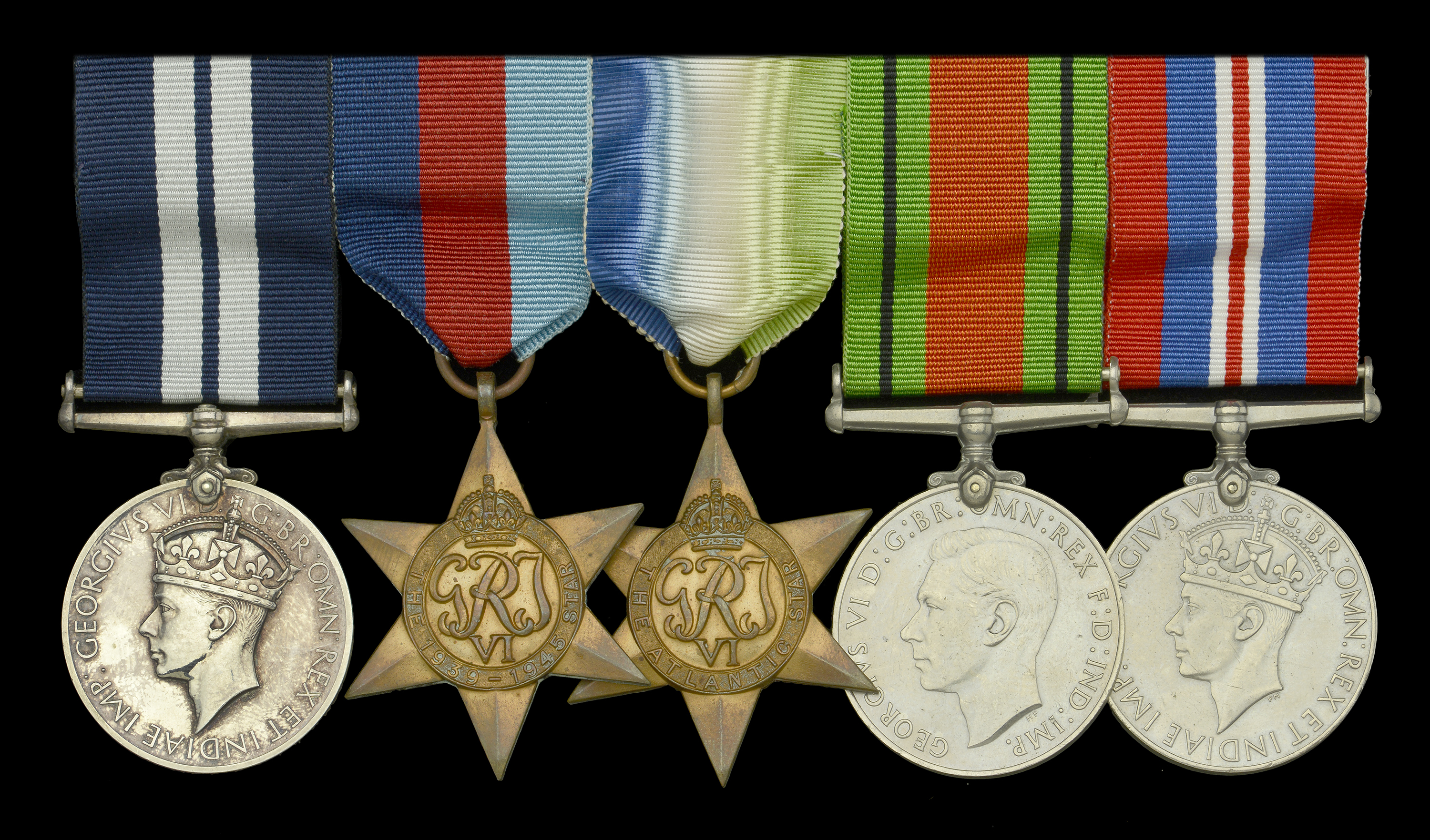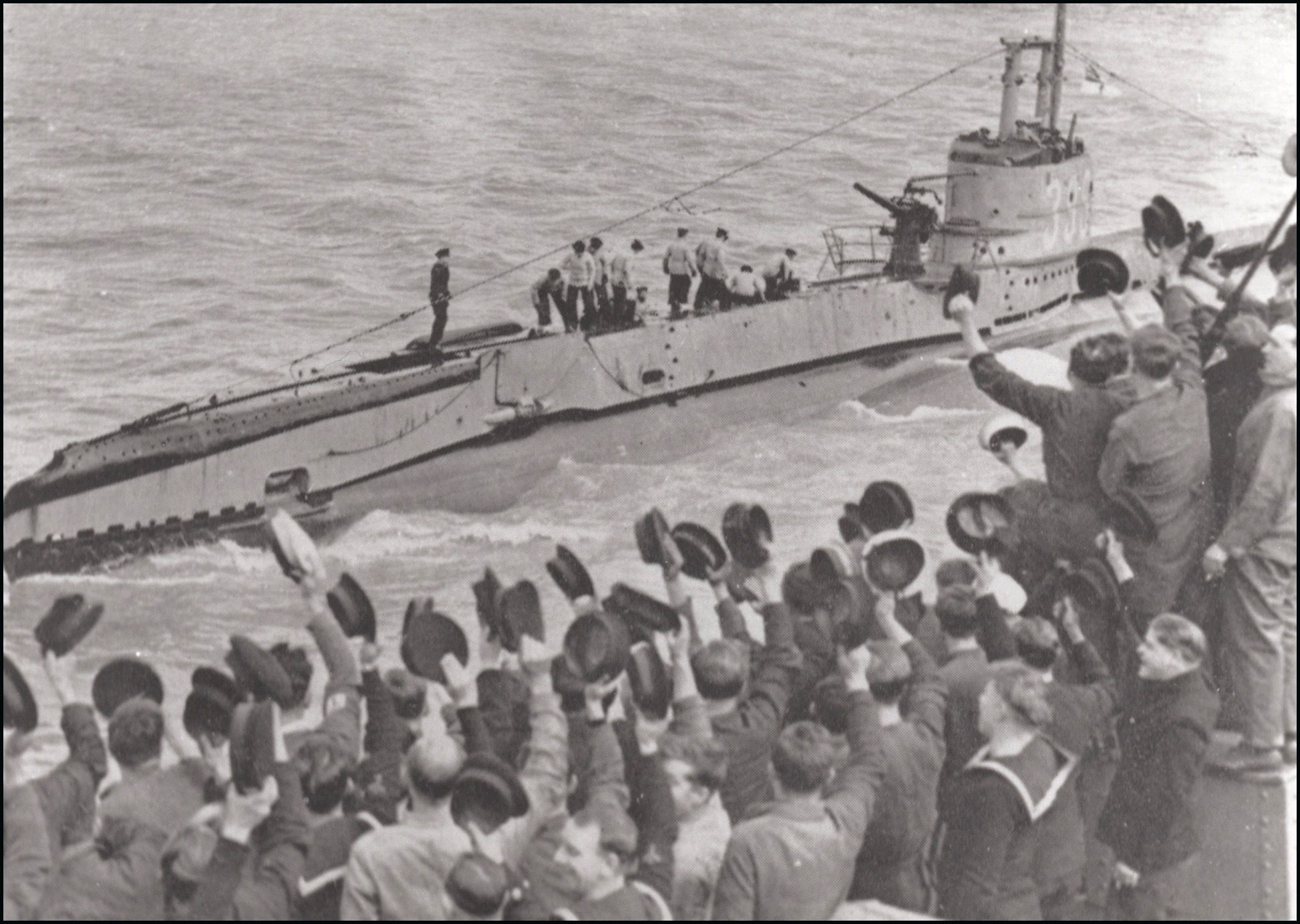The Second War submariner’s D.S.M. group of five awarded to Engine Room Artificer A. J. Cooper, Royal Navy, who was decorated for his gallant deeds in H.M.S. Snapper, prior to her loss with all hands in the Bay of Biscay in February 1941 Distinguished Service Medal, G.VI.R. (M.35070 A. J. Cooper., E.R.A.1. H.M.S. Snapper.) impressed naming, small correction to ship’s name; 1939-45 Star; Atlantic Star; Defence and War Medals 1939-45, mounted as worn, extremely fine (5) £1,400-£1,800 --- Importation Duty This lot is subject to importation duty of 5% on the hammer price unless exported outside the UK --- --- D.S.M. London Gazette 9 May 1940: ‘For daring, endurance and resource in the conduct of hazardous and successful operations in His Majesty’s Submarines against the enemy.’ Arthur John Cooper was born in Sheerness, Kent, on 1 December 1903, and entered the Royal Navy as a Boy Artificer in August 1919. Having volunteered for submarines in the summer of 1926, he was awarded the L.S. & G.C. medal in December 1936 and joined H.M.S. Snapper as an E.R.A. 1 in the following year. He was to remain likewise employed up until her loss in February 1941. Snapper was commanded by Lieutenant W. D. A. King, R.N., on the outbreak of hostilities, and commenced her operational career with a series of patrols off the Dutch coast. As related by King in his wartime memoir The Stick and The Stars, it was not until her transfer to Norwegian waters in April-July 1940 that Snapper fired her first shots in anger. ‘We planted one round of high explosive from the 3-inch gun into her forepeak. The result could hardly have been more spectacular. She was carrying aviation spirit and went up in a sheet of flame. Half a dozen figures raced to the side and hurled themselves into the still, ice-blue, ice-cold water which had just thawed and poured out from the frozen Baltic. As they swam towards us a mast appeared on the horizon and I reckoned the hour for enemy aircraft was nigh. I hesitated between my desire to rescue the swimmers and fear of risking my crew and ship. We nosed gently from one survivor to another, with two men hauling them in over the saddle-tanks and lowering the exhausted wet bodies down the forehatch, which is about 20 ft. lower than the conning tower and a dangerous place for the crew to be when there is a likelihood of an emergency dive. The last swimmer was dragged over our casing just as the first aircraft appeared. Deciding to abandon this one man and get the vital forehatch closed, I ordered, “Clear the foredeck and dive.” But Geoffrey Carew-Hunt, my third officer, begged, “Let me get him down, sir.” Weakly I snapped, “Do it quick.” Looking back, I think I should have been heartless. The risk to my ship was unjustifiable. While perhaps fifteen seconds ticked by, Carew-Hunt bravely dragged the wet German down the steep cluttered forehatch and shut it. I waited with my eyes fixed on that approaching black dot in the pale sky, then we gurgled under the translucent sea, urgent to slink away from the huge column of smoke which must draw attention for miles.’ Of the six Germans dragged aboard, two succumbed to their icy ordeal. Snapper went on to sink several other German ships in her favoured hunting grounds of the Skagerrak and Kattegat, among them the merchantman Florida, the auxiliary minesweepers M 1701 H.M. Behrens and M 1702 Carsten Janssen and the armed trawler V 1107. She also attacked the armed merchant cruiser Widder but her torpedoes on that occasion were wide of the mark. Command of Snapper having then passed to Lieutenant G. V. Prowse, R.N. on Christmas Eve 1940, she was ordered to patrol the Bay of Biscay off Ushant in February 1941. Nothing further was heard from her, and it is possible she fell victim to a minefield. Another possibility is that she was sunk by a depth-charge attack delivered by the German minesweepers M-2, M-13 and M-25 on the night of the 10th-11th, west-south-west of Brest. Either way, there were no survivors. The son of Lieutenant-Commander A. J. Cooper and his wife Ada, and the husband of May Katheleen Cooper of Weymouth, Dorsetshire, Arthur is commemorated on the Chatham Naval Memorial. The whereabouts of his L.S. & G.C. medal remains unknown, but it may have been among his possessions at the time of Snapper’s loss. More certain is the fact he never received his D.S.M., the award being sent to his next of kin. Sold with copied war patrol reports for April-May 1940, extracts from The Stick and the Stars by Commander William King, R,N., who had moved to the command of another submarine before Snapper was lost, and several copied photographs of Snapper.









